STEAMBOAT (Day 4 - part 3)


This lock connects the river to Lake Pontetrain (which is lower in elevation).


Miss Crosby ... Myles Francis
Built in 1978, this tug was first named the Judy Ann. In 1980 she was sold and renamed the Lori Bell. She was then sold many more times, changing names along the way, including the Good News Bay, Global Voyager and finally Miss Crosby in 2009. Known as a triple screw tug, it has three diesel engines.
Built in 1980 as the Monica Lynn, the boat was sold and renamed the Berthelia in 1986. She went through the names Tupelo, Stump Jumper, Miss Stacie and finally in 2020, the Myles Francis. The twin screw towboat is rated at 1,800 horsepower.

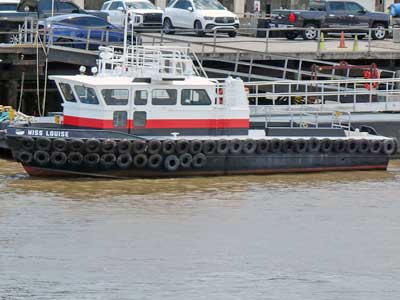
The Kieffer E Bailey was built in 2014 and is powered by two diesel engines with a rated 2,000 horsepower. ... Miss Louise
Towboat or Tugboat?
Tugboats and towboats are both workboats used to move vessels and other floating objects on the water.
A TOWBOAT only has the ability to push... which seems counterintuitive to its name.. until one realizes that "tow" is the word used for multiple barges lashed together. Other names for a towboat are also a pusher boat or push tug. They have a square bow, flat-bottomed hull and often several decks. They tend to stick to shallow waters and inland waterways and have more control, power and maneuverability.
A TUGBOAT can either push or pull. They have a round bow (for cutting through waves and rough water), deep hull and are usually one deck with a wheelhouse on top. They can pull barges and other vessels that can't navigate on their own. For better control, a tug always pushes rather than pulls a tow of barges.
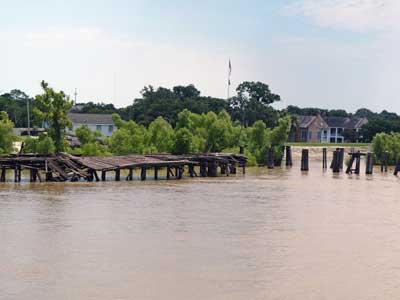

More evidence of hurricane damage




Jackson Barracks is the headquarters of the Louisiana National Guard as a command center for emergency operations. The base was established in 1834 and was originally known as New Orleans Barracks. In 1866, it was renamed in honor of Andrew Jackson who had commissioned the buildings to house US troops. The area was chosen for its close proximity to the city and the four forts guarding it against a seaborne invasion like Jackson had faced here in 1815.


A towboat pushes multiple barges (or a tow) ahead of it.


The Domino Sugar Chalmette Refinery is the largest cane sugar refinery in the western hemisphere and produces 2 billion pounds of sugar each year (or about 7 million pounds per day). Its sugar is made for consumer use, commercial use in candy, and for other commercial food purposes. There was a nice malty smell.

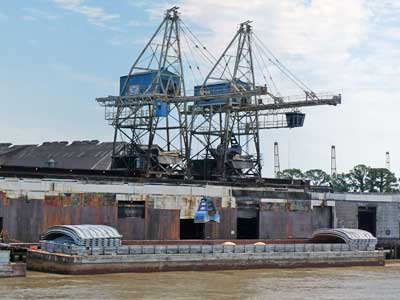
Completed in 1909, construction took nearly 4 years and required 20,000 tons of cement, 10,000 windows and 5 million bricks. Raw sugar was delivered to the refinery in 200-pound burlap sacks. In the early 1950s, it began to be delivered in bulk by giant barges. Giant cranes were constructed to unload it.


Unloading the raw sugar
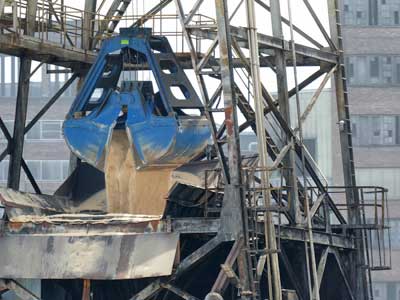

Processing


Boats and people working on the river


Work began on a 200-foot obelisk in 1856 but halted at a height of 55 feet due to lack of funds. Construction began again in 1894, but it was realized that a reduced height was necessary for stability. This 100-foot tall Chalmette Monument was completed in 1908 and marks the site of the Battle of New Orleans in 1815. The Chalmette Battlefield is part of the Jean Lafitte National Historical Park and Preserve.


Most of these barges stay on the river and don't head out to the ocean, which is still 135 miles away.


PBF Energy is one of the largest petroleum refiners and suppliers of transportation fuels, heating oil, lubricants and other petroleum products in the US. The Chalmette Refinery processes 185,000 barrels of crude oil per day.
This was the point at which the ship turned around and began its return trip. We popped into the large dining hall. There was a lunch being served but we had opted out of it.




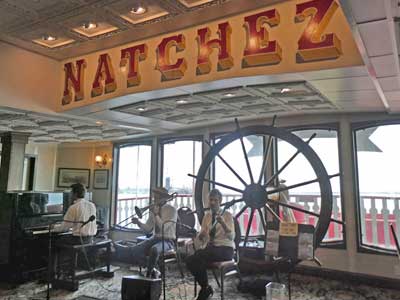

The Duke Heitger's Steamboat Stompers provided lively jazz music, which could be heard all over the boat via loudspeakers.


Exploring the ship ... the giant paddlewheel at the stern


The 25-foot-diameter, 26-ton wheel is made of white oak and steel. It can move the boat 10 - 12 miles per hour.






Grabbing a snack
return • continue

